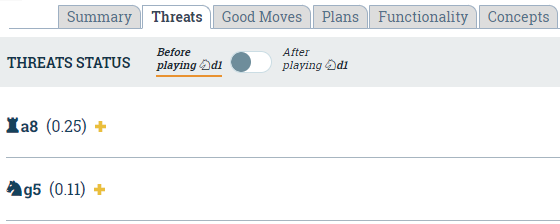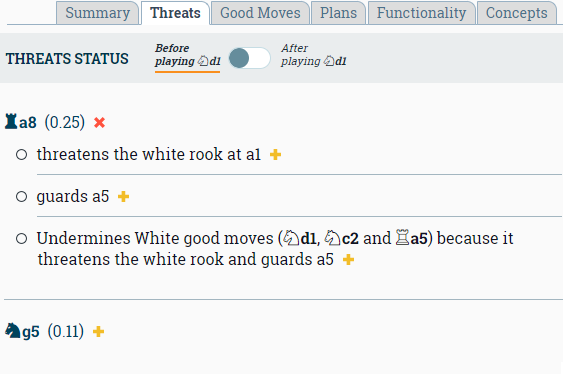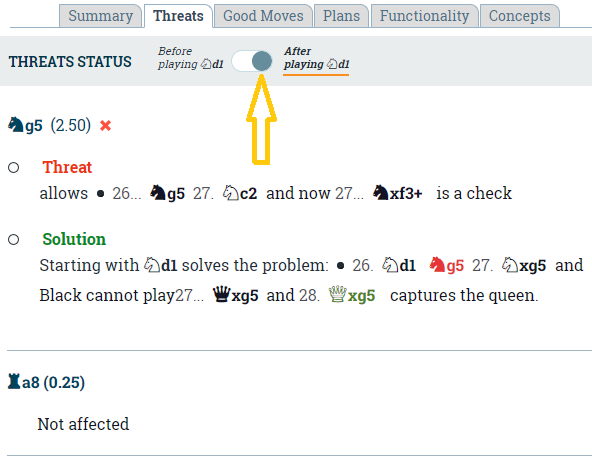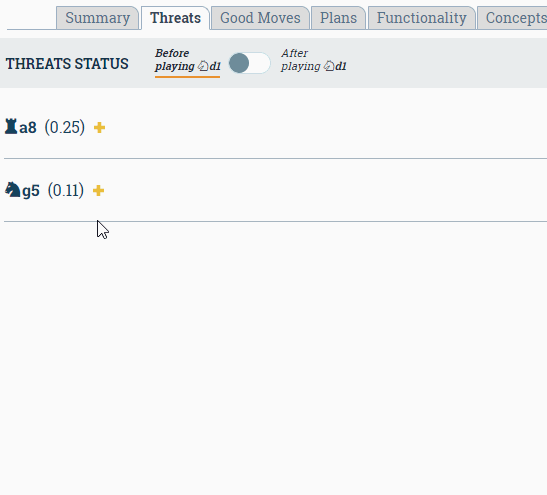Threat Analysis that Helps You Win
Exploring the Threats tab on DecodeChess
Analyzing opponent threats at any given position is an essential part of a chess game. For this reason, we dedicated an entire tab to threats analysis. Read this short article and learn how to make the best use of DecodeChess’s Threats tab.
Opponent Intentions Summary
Once a Decode process is over, the Summary tab will include an expandable area called Opponent intentions. The intentions listed are extracts taken from the Threats tab, and they correspond with clickable arrows on the board:

While this is a good place to start your analysis journey, we highly recommend that for key positions, you step over to the Threats tab.
The Threats Tab – Prior to Playing the Best Move
The tab displays a list of threats, each piece can be expanded to view the different ways in which it poses a threat. The toggle button allows you to examine this threat before and after the best move was played.

Upon expanding one of the threats, you will receive a thorough analysis of the type of damage this piece can cause. This includes both verbal explanations and annotated variations of how the opponent might execute the threat. the last bullet point will always serve as a summary of how the threats imposed by this piece undermine your good moves.

The Threats Tab – After Playing the Best Move
Now comes the fun part! If you toggle the Threats button, you’ll be able to see how each threat is affected by playing the next best move.

We can that is this case, playing Nd1 has not affected the Rook’s threat. However, we can see that the Knight’s threat evaluation by the engine has now changed from ~0.11 centipawns to ~2.5 centipawns. In other words, if the opponent plays this move now, it will actually be beneficial to you. most importantly, you get the Solution paragraph that shows you how the best move has diminished the threat.
Summary
We hope you enjoyed this quick feature review. A good next step is to explore how we explain chess openings.
*Positions in this article were taken from Anand vs Kamsky (1995, 1-0). Head over to the Examples folder in the console to see more explanations.



 decodechess
decodechess